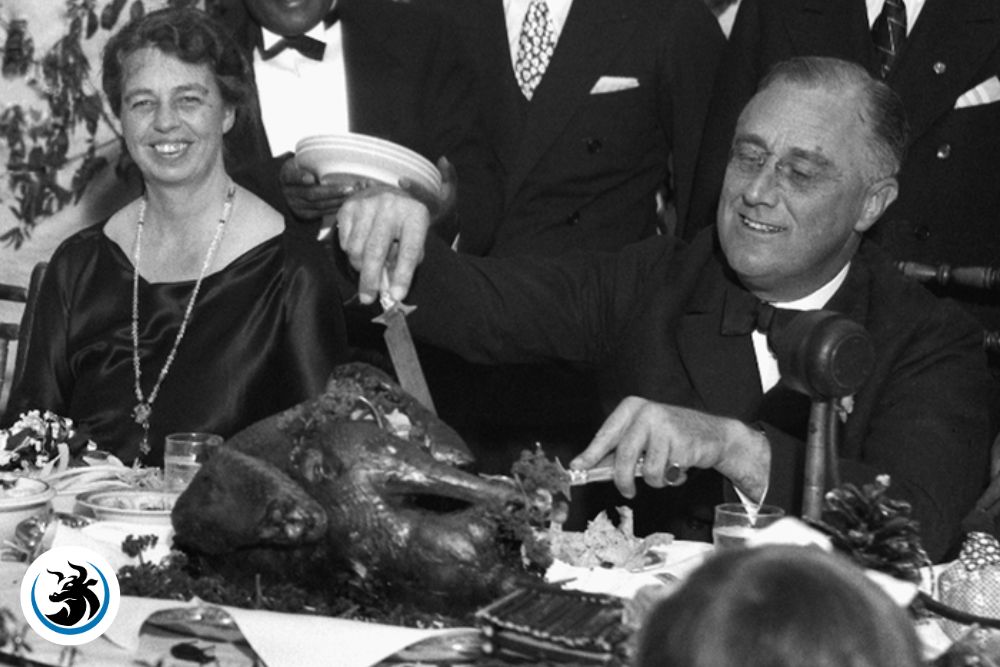
A brief period in American history saw the celebration of “Franksgiving” in several parts of the nation. President Franklin D. Roosevelt moved Thanksgiving forward one week in 1939 in an effort to stimulate the economy and give consumers more time for holiday shopping. Many merchants celebrated the adjustment, and FDR claimed the big retailers had requested the move. However, other organizations opposed it: several turkey vendors, smaller merchants, colleges, football officials, and the media all objected to the date change. Since 1863, Americans have observed Thanksgiving on the final Thursday of November, in observance of Abraham Lincoln’s founding custom. But there was no set date for Thanksgiving; instead, it was up to each President to decide when to celebrate the holiday. FDR decided to host Thanksgiving on November 23 in 1939 since the last Thursday of the month fell on November 30.
Reactions to the announcement, made in August 1939, were conflicting and mostly along party lines. Democrats observed the President, but Republican governors sought to maintain tradition and called the new date “Franksgiving.” As a result, there were two Thanksgivings in that year: 23 states and the District of Columbia observed the new holiday on November 23 while 22 states continued to celebrate on November 30. Texas, Mississippi, and Colorado were the three states that observed both. Even though there were doubts about whether the longer shopping season benefited businesses in the long run, the earlier date remained in place for an additional two years. Without much fanfare, Roosevelt said in June 1941 that Thanksgiving would now take place on the fourth Thursday of November, rather than the last, and it has been that way ever since.
